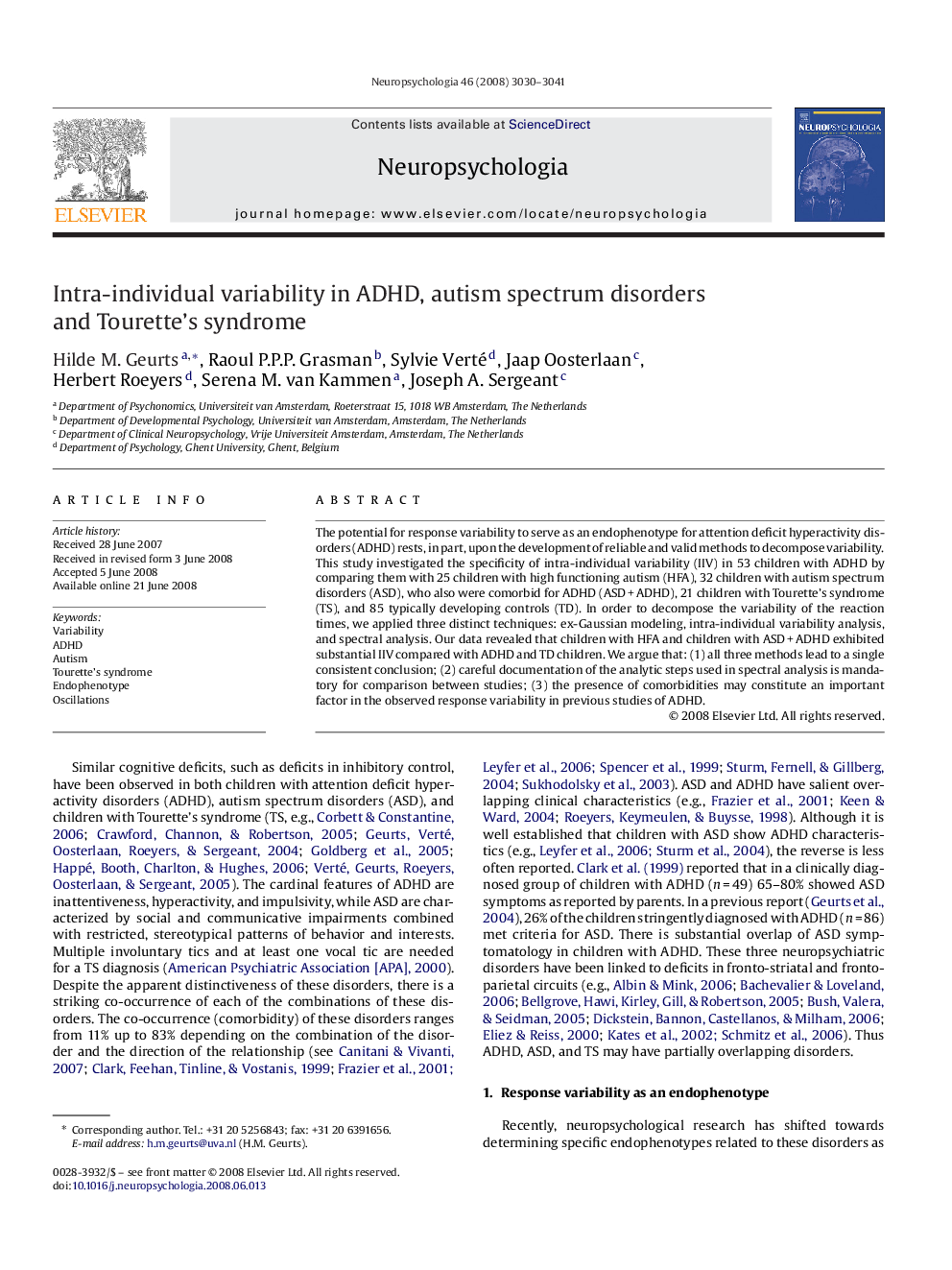| Article ID | Journal | Published Year | Pages | File Type |
|---|---|---|---|---|
| 10466538 | Neuropsychologia | 2008 | 12 Pages |
Abstract
The potential for response variability to serve as an endophenotype for attention deficit hyperactivity disorders (ADHD) rests, in part, upon the development of reliable and valid methods to decompose variability. This study investigated the specificity of intra-individual variability (IIV) in 53 children with ADHD by comparing them with 25 children with high functioning autism (HFA), 32 children with autism spectrum disorders (ASD), who also were comorbid for ADHD (ASDÂ +Â ADHD), 21 children with Tourette's syndrome (TS), and 85 typically developing controls (TD). In order to decompose the variability of the reaction times, we applied three distinct techniques: ex-Gaussian modeling, intra-individual variability analysis, and spectral analysis. Our data revealed that children with HFA and children with ASDÂ +Â ADHD exhibited substantial IIV compared with ADHD and TD children. We argue that: (1) all three methods lead to a single consistent conclusion; (2) careful documentation of the analytic steps used in spectral analysis is mandatory for comparison between studies; (3) the presence of comorbidities may constitute an important factor in the observed response variability in previous studies of ADHD.
Related Topics
Life Sciences
Neuroscience
Behavioral Neuroscience
Authors
Hilde M. Geurts, Raoul P.P.P. Grasman, Sylvie Verté, Jaap Oosterlaan, Herbert Roeyers, Serena M. van Kammen, Joseph A. Sergeant,
